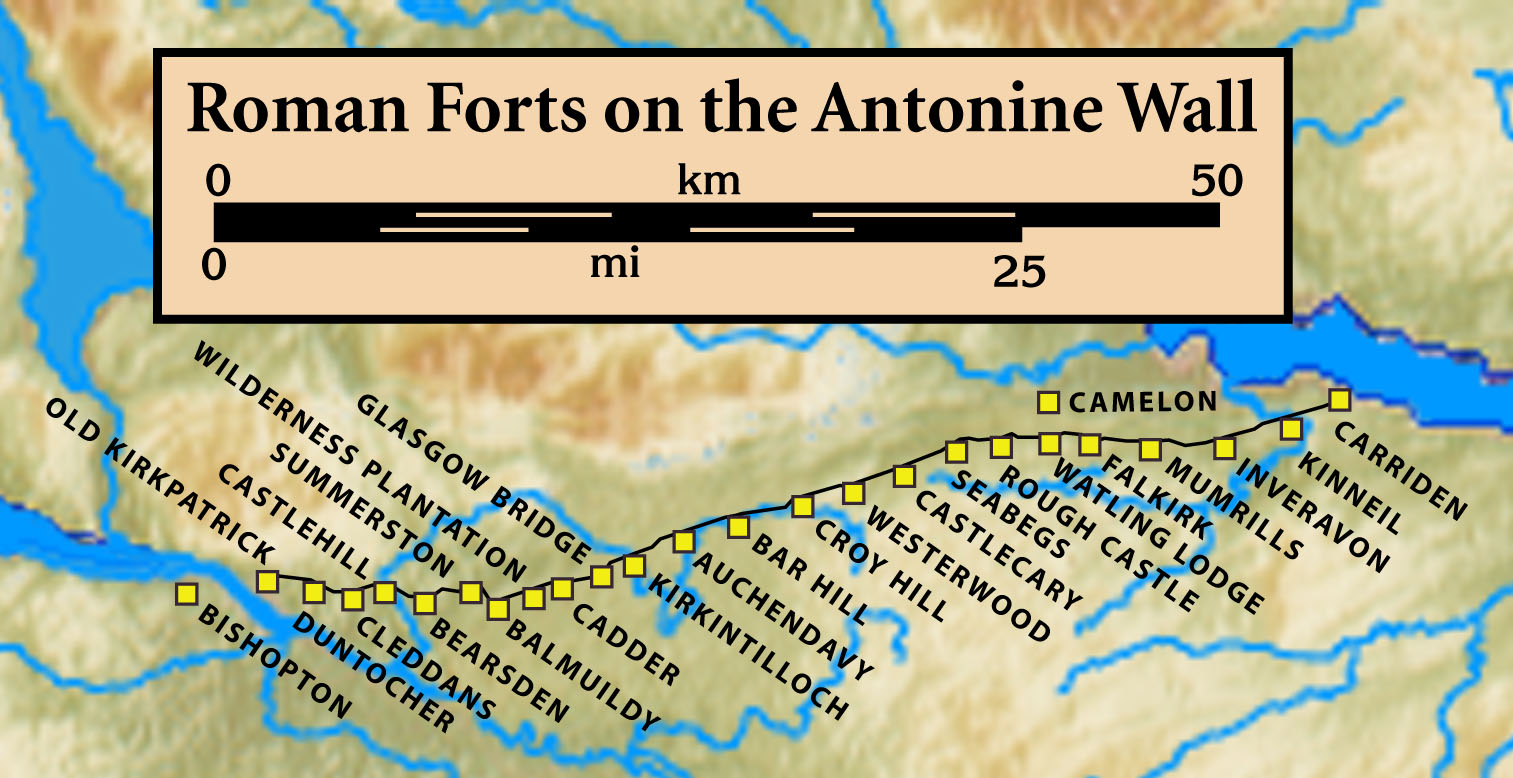Antonine Wall
The Antonine Wall, known to the Romans as Vallum Antonini, was a turf fortification on stone foundations, built by the Romans across what is now the Central Belt of Scotland, between the Firth of Clyde and the Firth of Forth. Built some twenty years after Hadrian's Wall to the south, and intended to supersede it, while it was garrisoned it was the northernmost frontier barrier of the Roman Empire. It spanned approximately 63 kilometres (39 miles) and was about 3 metres (10 feet) high and 5 metres (16 feet) wide. Security was bolstered by a deep ditch on the northern side. It is thought that there was a wooden palisade on top of the turf. The ruins are less evident than those of the better-known and longer Hadrian's Wall to the south, primarily because the turf and wood wall has largely weathered away, unlike its stone-built southern predecessor.
The wall was abandoned only eight years after completion, when the Roman legions withdrew to Hadrian's Wall in 162 CE. Several factors contributed to this decision: constant pressure and raids from the northern tribes made it difficult to maintain, logistical challenges in supplying such a distant frontier, and shifts in the strategic priorities of the Roman Empire. Ultimately, the Antonine Wall proved to be more of an overextension of Roman ambitions than a sustainable frontier.
This event is also available in the following timelines:
